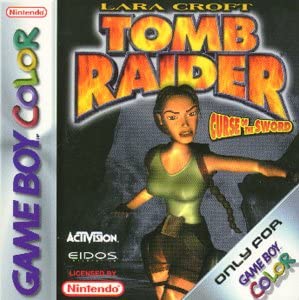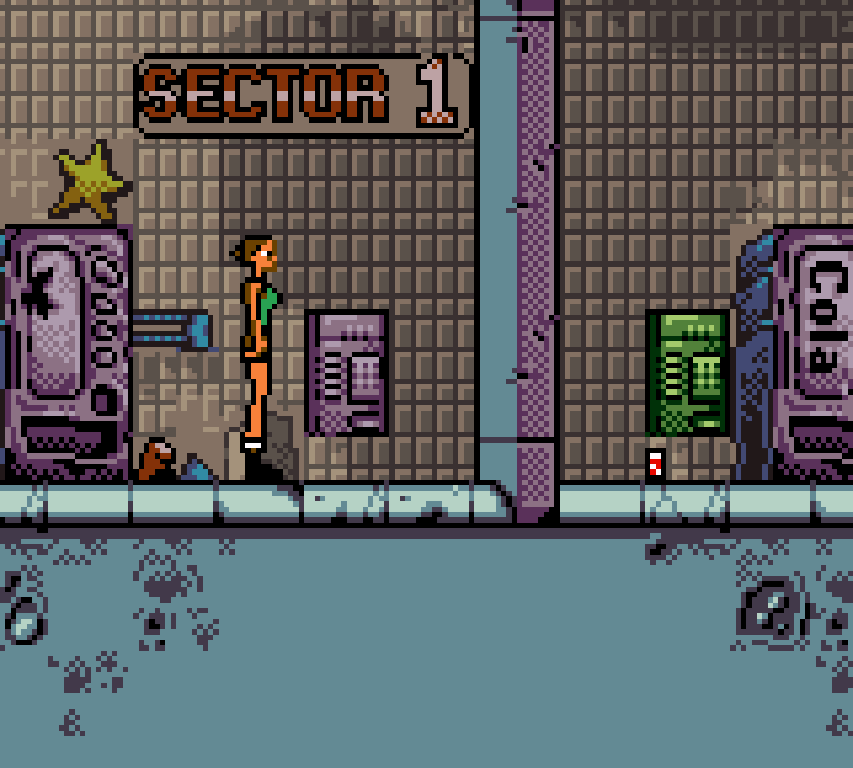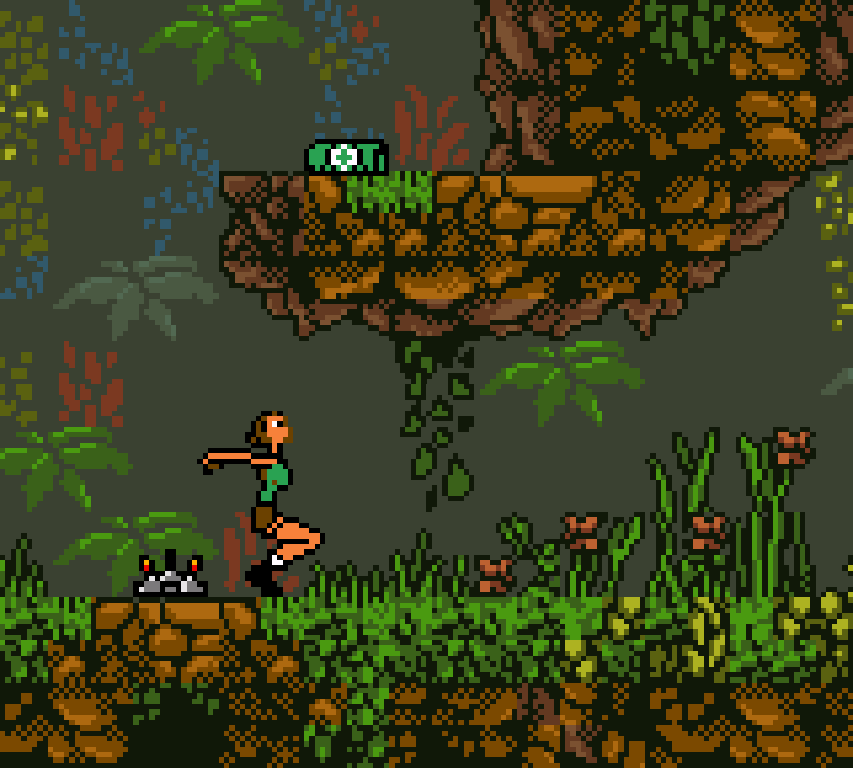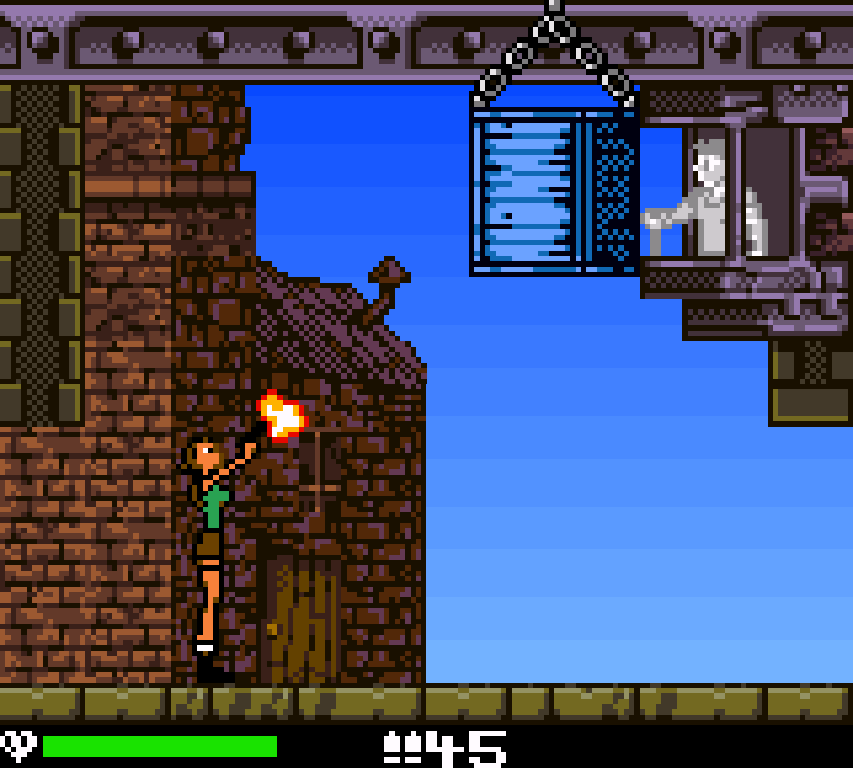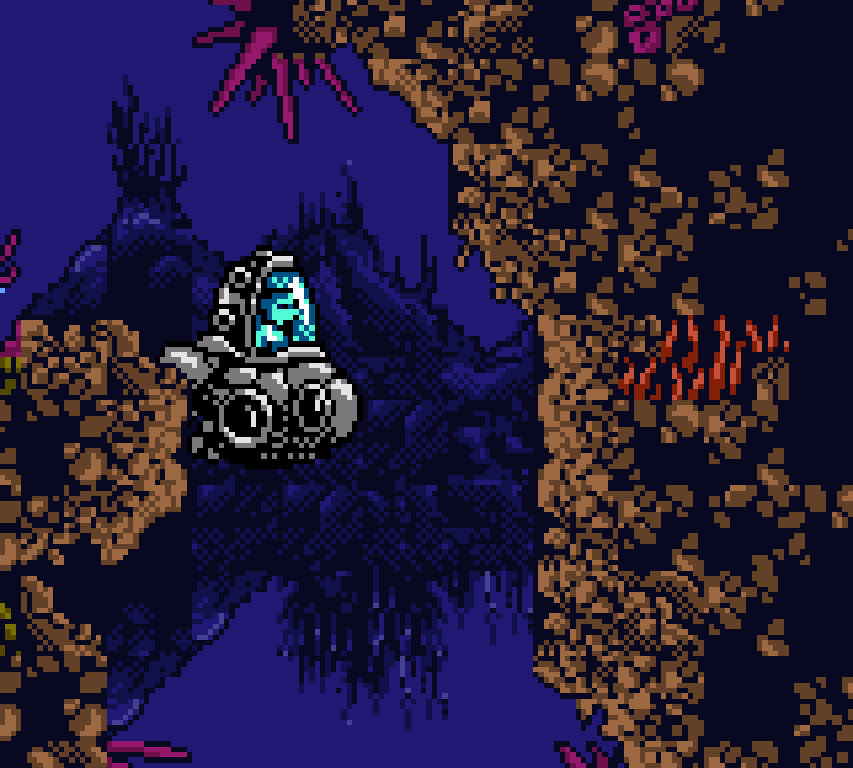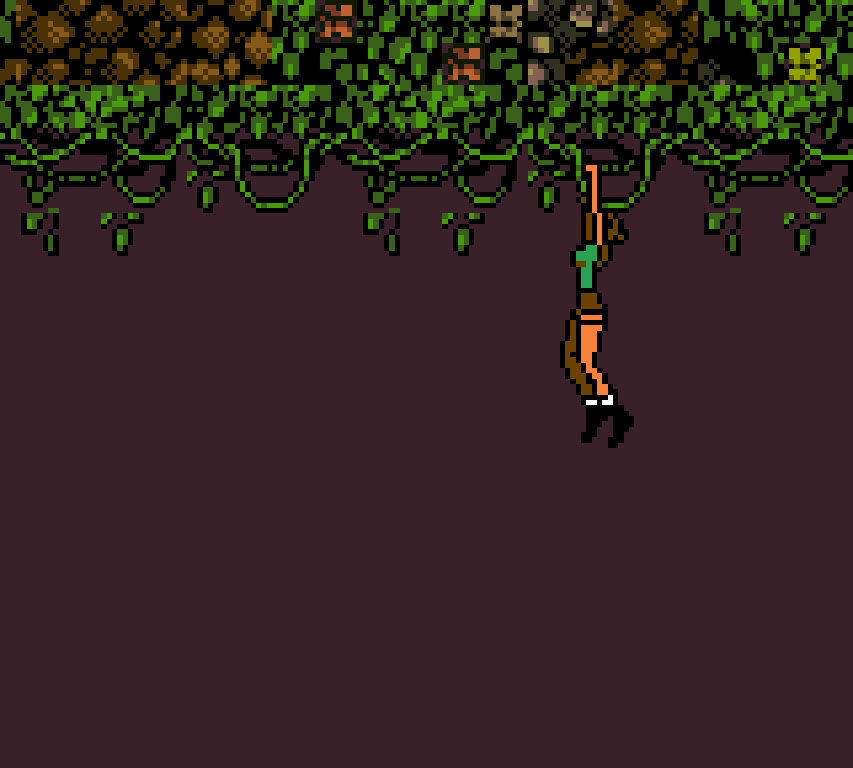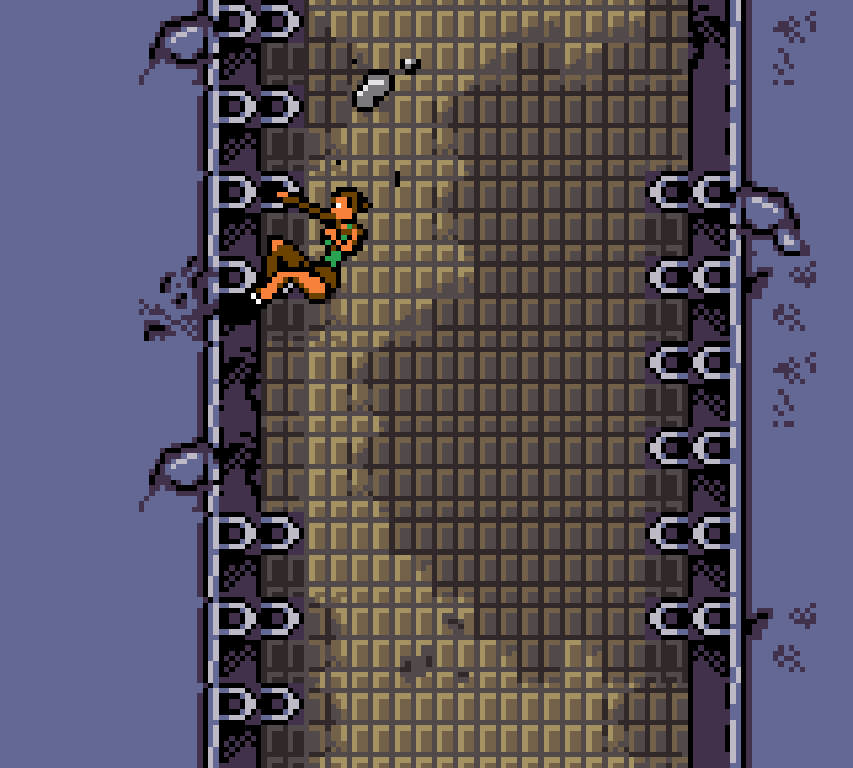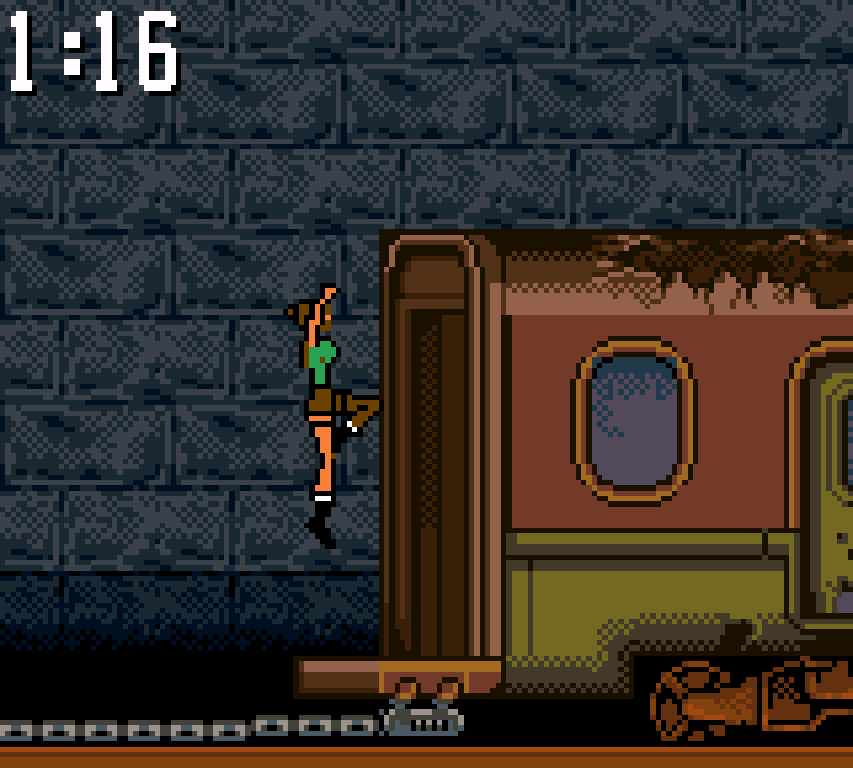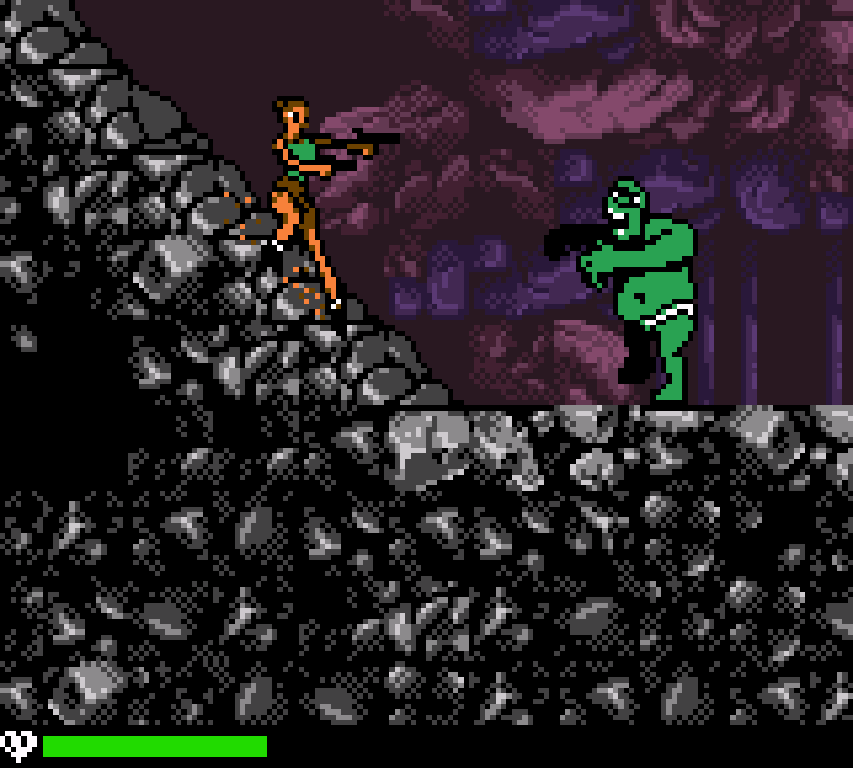TOMB RAIDER: CURSE OF THE SWORD (GBC)
Five huge hugely successful adventures in five years had seen Core Design, Lara Croft and the Tomb Raider series rewrite the gaming landscape between 1996 and 2000. Inevitably, however, with the looming prospect of a sixth-generation hardware leap weighing on its developers, burnout was starting to gnaw at the main series. There was, however, an unexpected ray of light. Whilst at the turn of the millennium, Core was looking on with trepidation towards the development of Angel of Darkness, their handheld series wasn’t subject to the same technological arms race, or the unrealistic burdens of expectation. Curse of the Sword, a sequel to the highly accomplished 2000 portable debut Tomb Raider, marked a superlative progression. Largely forgotten these days, CotS deserves to be recognised as one of the finest games available for the Game Boy Color.
Curse of the Sword has parallels with Tomb Raider II. Just like the PlayStation classic, it greatly reduces the literal tomb-raiding aspect of its predecessor and transitions Lara Croft from archaeologist to full-blown action heroine. The game’s excellent, weighty mechanics and rotoscope-style animations are straight from the pages of classic cinematic platformers like Prince of Persia and Flashback. There’s no incongruity to this crossover either, as CotS implements Lara’s trademark manoeuvres with effortless ease. Dual-wield pistols, backwards-somersaults and death-defying leaps prove make for an entirely consistent fit for this style of adventure.
Detail, colour, animation, fluidity: there are few GBC games that can live with Curse of the Sword in terms of presentation standards
Fans will delight in the improvements it makes over its already-very-decent portable predecessor. Whilst Tomb Raider placed an onus on platforming and action, CotS works hard to give its locations greater depth, both in terms of layouts and visual design. This ambitious approach results in some hugely impressive and memorable levels, many of which have hub-like centres from which Lara must explore to find the necessary keys, items and switches to make progress. Puzzles are more far-reaching here, tasking the player to move boxes via cranes, collect and charge batteries to power a submersible or find scraps of a safe code hidden around an office.
The settings are much more engaging, with lots of surprises and a nice evolution in terms of the gameplay experience. A rooftop chase and a mad dash through a runaway train provide a couple of adrenaline-charged palette cleansers, making for some thrillingly enjoyable intermissions between the more complicated main stages. The museum level the game opens with is perfect for acclimating the gamer to Lara’s move set, without feeling like a tutorial. It also shows off a more identifiably “real-world” style of environment, which gets even better when you reach the Subway stage. As the story nears its conclusion, Lara crash-lands her plan in a wonderful Caribbean level that’s evocative of Flashback’s Titan jungle, with a colourful but deadly forest canopy that’s laced with mines and dangerous wildlife. Here the focus realigns with the first game, placing an onus on platforming and finding a route that leads Lara upwards, towards the caves and mountains.
The settings are much more engaging, with lots of surprises and a nice evolution in terms of the gameplay experience. A rooftop chase and a mad dash through a runaway train provide a couple of adrenaline-charged palette cleansers, making for some thrillingly enjoyable intermissions between the more complicated main stages. The museum level the game opens with is perfect for acclimating the gamer to Lara’s move set, without feeling like a tutorial. It also shows off a more identifiably “real-world” style of environment, which gets even better when you reach the Subway stage. As the story nears its conclusion, Lara crash-lands her plan in a wonderful Caribbean level that’s evocative of Flashback’s Titan jungle, with a colourful but deadly forest canopy that’s laced with mines and dangerous wildlife. Here the focus realigns with the first game, placing an onus on platforming and finding a route that leads Lara upwards, towards the caves and mountains.
FOCAL POINT: DOCKS
Highlighting a single level is tricky as there are so many superbly realised locations. Amidst a litany of highlights, it’s the Docks that deserve special mention. Another interesting parallel with Tomb Raider II, the buildings, waterways and string of armed guards in highly reminiscent of the classic Venice level from the 1997 PlayStation outing. It looks fantastic, with a raft of distinct in-door and out-door locations and whilst parallax scrolling was nothing new in 2000, it’s nevertheless put to good use here, accentuating the depth of the surrounds. There’s all sorts of everything going on here. Lara must fight a couple of bosses aiming to crush her with crane-operated containers. Survive this and it’s on to a research facility to find a bunch of chargeable batteries whilst fending off the attentions of zombie-like test subjects. The Docks culminates in Lara powering up and piloting a submersible, allowing for her to explore under the waves in a way even the classic PlayStation instalments didn’t think to try. Brilliant, beautiful, creative and surprising, it’s essentially the game in a microcosm.
Curse of the Sword looks staggeringly good. It’s hard to think of a Game Boy Color game that can live with it, in terms of the fluidity of its animations, or the quantity and quality of its scenery. Its predecessor looked very good, but by the end, there was still a sense of the hardware limitations around the edges. The usual offenders: recycling tiles and palette swapping for the illusion of variety. Not only does CotS avoid this symptom of design repetition, but it’s also positively awash with gorgeous little touches and details unique to each area.
For example, the Docks are replete with old shop signs and ramshackle buildings; the Subway is dominated by flickering displays and vending machines, whilst the Rooftop Chase segment as some large and humorous billboards. These are collectively helpful, giving the player some much-needed orientation. It’s far less like you’ll get lost in a labyrinth of similar corridors than in the first game.
For example, the Docks are replete with old shop signs and ramshackle buildings; the Subway is dominated by flickering displays and vending machines, whilst the Rooftop Chase segment as some large and humorous billboards. These are collectively helpful, giving the player some much-needed orientation. It’s far less like you’ll get lost in a labyrinth of similar corridors than in the first game.
Whilst more obvious details such as flaming torches, large statues and the dinosaur skeleton displays are fantastic, small touches are equally atmospheric. The best include the abandoned subway, where running sees Lara kicking cans and sending litter swirling as she passes. Similarly, the rooftop chase results in the scattering of flocks of birds and items on clotheslines blowing in the wind.
It’s a lengthy endeavour by handheld standards, with easily ten hours of play to be enjoyed. Save points are reasonably well-placed though not overly abundant, so the challenge is decently measured. There’s little to fault how it plays, but perhaps the weapon draw feature (allocated to Select) could have been more responsive. Perhaps the sole point of criticism that can be levelled at CotS design-wise is its lack of secrets. Of all the miracles it works in transitioning the mechanics and tone of the 3D adventures into a handheld experience, it’s a surprising omission. A couple of hidden treasures here and there, along with a level select function, would have benefited its replay value.
It’s a lengthy endeavour by handheld standards, with easily ten hours of play to be enjoyed. Save points are reasonably well-placed though not overly abundant, so the challenge is decently measured. There’s little to fault how it plays, but perhaps the weapon draw feature (allocated to Select) could have been more responsive. Perhaps the sole point of criticism that can be levelled at CotS design-wise is its lack of secrets. Of all the miracles it works in transitioning the mechanics and tone of the 3D adventures into a handheld experience, it’s a surprising omission. A couple of hidden treasures here and there, along with a level select function, would have benefited its replay value.
For many, the GBC instalments can’t replace Lara Croft’s iconic early 3D adventures and this is understandable as, on the surface at least, they’re a different kettle of fish. That said, CotS benefits from a more immediate play style and retain the series’ penchant for clever and inviting levels, edge-of-the-seat platforming and exotic locations. It goes toe-to-toe with some of the greats of the cinematic-platformer genre and, despite the technological mismatch, gives a tremendous account of itself. Curse of the Sword squeezed absolutely everything it could from the Game Boy Color and though we couldn’t have suspected it at the time, marked what was arguably, pound-for-pound, the finest Tomb Raider of the decade.
|
|
VERDICT
"Curse of the Sword squeezed absolutely everything it could from the Game Boy Color and though we couldn’t have suspected it at the time, marked what was arguably, pound-for-pound, the finest Tomb Raider of the decade." OVERALL: 9/10 |
